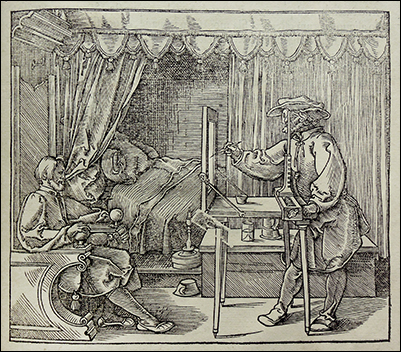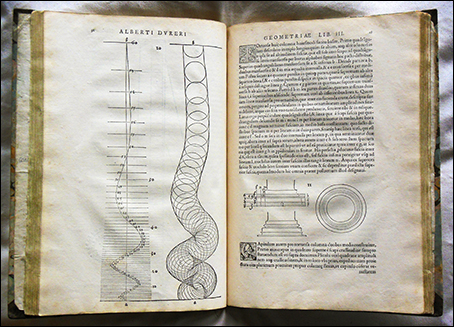Library acquires rare book by Albrecht Dürer
A book that some scholars consider to be the most important book of the artistic Renaissance in northern Europe has made its way onto the shelves of LSU's Hill Memorial Library.
The Institutiones geometricae of Albrecht Dürer was a landmark in the development of Renaissance art and architectural practice. Its author, a contemporary of Leonardo da Vinci, was as highly regarded as a theorist as he was as an artist. Originally published in Germany in 1525 as Underweysung der Messung mit dem Zirckel und Richtscheyt (Instructions for Measuring with Compass and Ruler), the work was translated in 1532 into Latin, the universal language of the day, so that it could be more widely read.
Divided into four parts, the first two focus on linear and two-dimensional geometry. In the third, Dürer discusses how these principles can be applied to architecture, engineering, painting, and type design. The final section tackles linear perspective, or how to accurately represent a three-dimensional scene on a flat canvas or piece of paper — one of the great developments of Renaissance art. It was Dürer, in large part, who helped spread this concept from Italy to the rest of Europe, an important step down the long road that has now brought us to 3-D computer graphics.
"We are thrilled to be able to share this important rare book with students and faculty and the broader community," Jessica Lacher-Feldman, Head of Special Collections, commented. "It has one of the most compelling stories of any book in our collection. We usually think of Dürer as a painter, but understanding his work as a mathematician and theorist makes us appreciate his genius all the more. He was a true (pardon the pun!) Renaissance man in every sense!"


